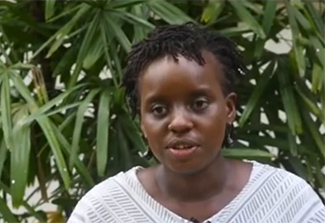Repurposing known drugs to deliver Cures Within Reach
January/February 2025 | Volume 24 Number 1
Researchers looking for funding opportunities would be wise to check out
Cures Within Reach (CWR). This Chicago-based nonprofit identifies and finances clinical trials that test approved therapies in new indications. Clare Thibodeaux, PhD, CWR’s vice president, scientific affairs, noted that the nonprofit’s program,
Repurposing Grants for the Rest of the World (ReGRoW), shares this aim. Therapies investigated under the ReGRoW program, which funds clinical trials in low- and middle- income countries (LMICs), need to be accessible to regional patients.
“The ReGRoW program fills a gap in LMIC clinical research funding while also helping researchers find an efficient approach to developing much-needed treatments for neglected populations,” said Fogarty’s Deputy Director Dr. Peter Kilmarx.
Unusually, ReGRoW not only supports the testing of generic pharmaceutical drugs for new indications but also the testing of indigenous medicines. “A number of traditional medicines can be very helpful,” said Thibodeaux. Some recent ReGRoW submissions propose clinical trials for such therapies, which, historically, have been used by community healers but not widely used by clinicians.
 Photo courtesy of Cures Within ReachKey metrics for Cures Within Reach at the end of fiscal year 2024.
Photo courtesy of Cures Within ReachKey metrics for Cures Within Reach at the end of fiscal year 2024.
Niche yet broad
Beginning as a family foundation, CWR began funding translational research nearly three decades ago. Early projects included several studies to test approved drugs for unapproved conditions. In 2008, the foundation assessed all of its past projects and made an unexpected discovery: The repurposing studies had made the greatest impact on patients’ lives.
This Eureka moment led to CWR’s current policy. “De-risking known drugs, devices, nutraceuticals and diagnostics in new indications really is the fastest way to create patient impact,” said Thibodeaux.
Though CWR has a narrow focus (on repurposing), its portfolio is broad. “We’re disease agnostic, we’re geography agnostic, and we’re patient population agnostic,” said Thibodeaux. Research grants start at US$65,000 and can support a small, proof-of-concept, Phase I or Phase IIa human clinical trial, which may establish a repurposed drug's safety and/or dose range. Less often, grants fund larger Phase IIb/Phase III trials, which determine if an experimental drug is effective.
“Perhaps a researcher has an idea based on preclinical research, but other funders have said, ‘That's a great idea—come back when you have pilot data… or when you've got the safety and dosing worked out.’ By providing catalytic seed funding, CWR spurs these projects forward,” said Thibodeaux. The nonprofit measures its success based on how much investigators can raise after completing CWR projects.
“We're at $10 million that we've invested over the years in repurposing research, and our P.I.s have gone on to raise more than $110 million in follow-on funding.”
 Photo courtesy of Cures Within Reach
Dr. Mainga Hamaluba, clinical research head at KEMRI Wellcome Trust Research Programme, Kenya, led the Phase 1 snakebite trial funded by DWR; a member of her team will lead the follow-on trial.
Photo courtesy of Cures Within Reach
Dr. Mainga Hamaluba, clinical research head at KEMRI Wellcome Trust Research Programme, Kenya, led the Phase 1 snakebite trial funded by DWR; a member of her team will lead the follow-on trial.
Notable achievements
ReGRoW floated its first request for proposals in late 2019, its fifth in 2024. “Now we have funds to support 16 more trials over the next two years,” said Thibodeaux.
So far three ReGRoW projects have been completed, with two having raised significant follow-on funding. The first examined the addition of atorvastatin—a safe, lipid-lowering drug used to treat high cholesterol—to the standard of care for treating tuberculosis in Nigeria. “This researcher completed his trial, published a paper and then was awarded $300,000 to conduct a follow-on trial in a larger sample.” A second project looked at repurposing unithiol, used to treat heavy metal poisoning, as a therapy for snake bites in Kenya. “Their team received $5.4 million in follow-on funding to do the next phase of testing of unithiol plus one other drug as oral therapies for snake bite.”
Starting in 2025, ReGRoW will be funding community engagement in addition to clinical research. “Some of our LMIC researchers were already doing community outreach to reduce fear, mistrust and other obstacles to clinical trial enrollment. CWR will now be providing a separate budget for these efforts.”
As ReGRoW expands, Thibodeaux has seen escalating researcher submissions and, equally important, increasing interest from LMIC reviewers. “In 2024, we had 18 countries represented on our review panel. These volunteers are very generous with their time and expertise.” Fogarty contributed its expertise to help with the review process, and, as a result, CWR is now “more of a known quantity,” said Thibodeaux.
“What really amazes me is not only the volume of ideas that come our way—very creative, very interesting ideas—but the enthusiasm of volunteer reviewers who want to support this effort. It’s clear many people want to see our ReGRoW effort succeed.”
More information
Updated February 12, 2025
To view Adobe PDF files,
download current, free accessible plug-ins from Adobe's website.
Related World Regions / Countries
Related Global Health Research Topics